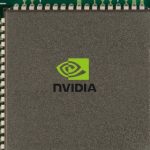Tesla has taken significant steps with the Semi, its all-electric Class 8 truck, introducing a comprehensive redesign as the company gets ready to begin public deliveries. While some of Tesla’s early partners, such as PepsiCo and Frito-Lay, have already put the Semi to use, the broader commercial release is expected in 2026. Industry stakeholders and logistics managers have been monitoring the project closely, viewing it as a possible catalyst for renewed interest in electric freight transport. The new design features aerodynamic enhancements and a look more consistent with the rest of Tesla’s vehicle lineup, signaling a unified visual identity across its product suite.
After its original announcement, Tesla frequently adjusted Semi’s launch schedule and design roadmap. Earlier communications placed focus primarily on range and payload, but details about production and design evolution remained limited. Recent years saw more concrete updates, such as PepsiCo piloting the trucks, but mass production was elusive. Ongoing infrastructure efforts, including state and federal funds towards charging corridors, show persistent gaps in national charging networks for heavy trucks, a challenge highlighted by Tesla’s unsuccessful bid for federal participation in some key corridors. The fresh details now emerging on design and capacity indicate Tesla’s ongoing response to industry feedback and infrastructure realities.
What changes define the latest Tesla Semi redesign?
The revamped Tesla Semi now sports a blade-style light bar that mirrors the aesthetics found on the Model Y and Cybertruck. Tesla has also integrated aerodynamic improvements to achieve higher efficiency—estimated at 1.7 kWh per mile. Adjustments to payload limits allow for greater hauling capacity, which could help businesses streamline logistics by transporting more goods per trip. Tesla affirmed these enhancements were based on insights from pilot programs and ongoing performance evaluations.
“Our updated design reflects both functional improvements and feedback from early adopters,” a Tesla representative stated at the annual shareholder meeting.
When will production scale up at the dedicated Nevada facility?
Tesla’s Semi Factory, co-located with the Gigafactory near Reno, Nevada, is nearing completion, with annual production capacity projected at around 50,000 units once fully ramped. This facility is poised to play a strategic role in pushing the truck into mainstream fleet operations. Recent aerial footage and company updates indicate that readiness for initial rollouts is on track, positioning Tesla to increase its presence in the commercial trucking market.
“We’re preparing for large-scale deliveries starting next year, and expect strong demand from fleet operators,” Tesla commented during the shareholder meeting.
How are broader electric truck charging networks evolving?
As electrification of freight vehicles advances, efforts to construct charging corridors for Class 8 trucks have accelerated. The State of California secured $102 million to build an electric truck corridor linking Washington to Southern California, while another project from Southern California to Texas recently received $636 million in federal grants distributed to multiple applicants. Although Tesla had applied for related federal support, their proposals were not selected. These investments suggest the public sector’s interest in supporting the adoption of electric commercial vehicles, although challenges in obtaining federal cooperation remain for some individual manufacturers.
Fleet testing with companies such as Frito-Lay and PepsiCo has shown that the Tesla Semi performs reliably in demanding conditions, raising confidence among logistics leaders about future purchases. Statements from both partners and Tesla have described positive outcomes in operational efficiency, though real-world data on broad deployment is still limited until larger fleets join the market. The interplay between increased manufacturing readiness and ongoing expansion of charging infrastructure will likely be decisive in the Semi’s commercial trajectory. As other manufacturers also join the electric Class 8 segment, a more competitive landscape could drive further innovation and operational refinement. For buyers and fleet operators, evaluating the total cost of ownership, range, and network support will remain key in choosing whether to transition large trucking fleets to electric alternatives.
- Tesla Semi’s redesign readies it for expanded deliveries starting next year.
- The Nevada factory expects up to 50,000 Semis produced annually when fully operational.
- Charging network expansion remains crucial for wider electric truck adoption.










